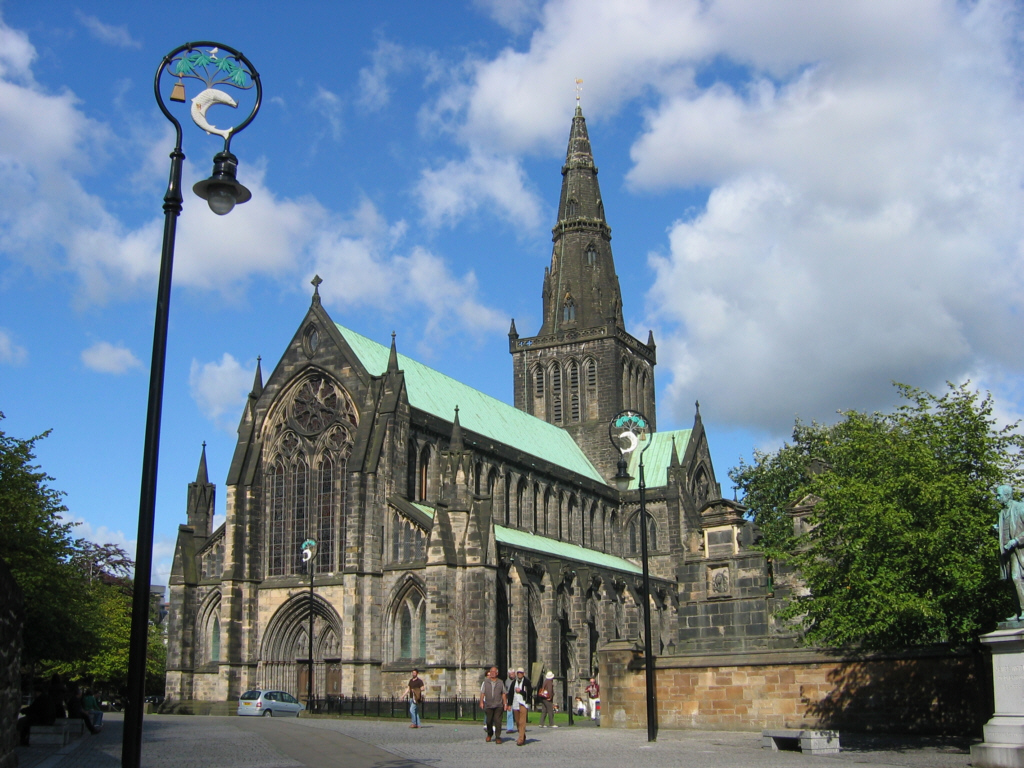Glasgow Cathedral
The Glasgow Cathedral is one of Scotland’s
most magnificent medieval buildings and one of the only ones to survive the
1560 Protestant Reformation. The Cathedral was built on where St Mungo, the
first bishop of Strathclyde, was supposed to have been buried in AD 612. The
tomb of St Mungo is held in the Crypt within the Cathedral.
The present building was built in 1197
and since then it has never been unroofed and has carried on being used as a
church for over 800 years.
The dark, imposing
interior is a shining example of Gothic architecture. The cathedral is
decorated with seven pairs of figures who represent the seven deadly sins.
There are four stained-glass panels on the east window which depict the
Apostles. The cathedral boasts one of the best post-war collections of stained
glass windows in Britain with the Apostles window being amongst the most
impressive.
The most interesting
part of the cathedral is the lower church, which is reached by a stairway which
dates back to the 12th century with steps being slightly worn from
years of use. A forest of pillars creates a dark spooky atmosphere around the
tomb of St Mungo.
Other connections
with the cathedral include one of Scotland’s most famous authors, Sir Walter
Scott. He refers to the Cathedral in his novel Rob Roy. Another must see part
of the cathedral is the breath-taking white ceiling in the Blackadder Aisle
which was built by Archbishop Blackadder in 1500.
Even if you aren't hugely
into religion or history, the Glasgow Cathedral is worth a visit just for the
incredible architecture. The cathedral is regarded as one of the top 25 things
to do in Glasgow according to TripAdvisor. It is free to visit as is the museum
next door, the St Mungo Museum of Religious Life and Art. It is usually open
daily, with limited hours on Sundays as it is a functioning church.

0 comments:
Post a Comment